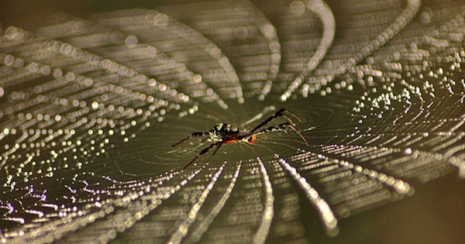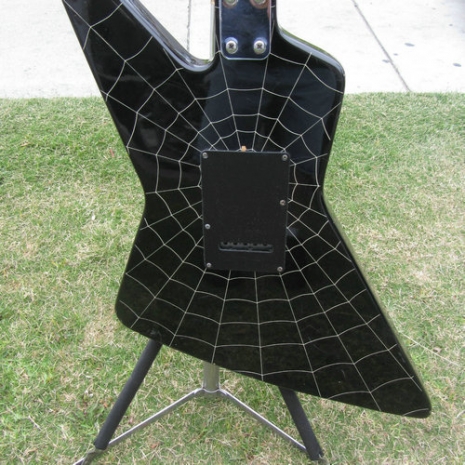
A team of researchers from the United Kingdom and Spain has demonstrated that spiders are capable of tuning their webs for the purpose of receiving information about the local environment, including the presence of prey and potential mates.
Similar to the strings of a finely tuned instrument, every strand of spider silk conveys vibrations across a wide range of frequencies over the span of a web. Spiders require a system like this to detect the presence of prey and mates, as their visual acuity is very low.
The general phenomenon has been understood by scientists for some time; what wasn’t clear were the precise characteristics of these vibrations or (more to the point) whether spiders exercised control over the practice. Researchers from Oxford University and Universidad Carlos III de Madrid have released a study, available in the Journal of the Royal Society Interface, that looks into the material properties of spider webs and the way that vibrations propagate through the silken strands. The team has shown that spiders do in fact tune their webs to transmit specific messages. The paper’s title is “Tuning the Instrument: Sonic Properties in the Spider’s Web.”

The researchers used lasers to measure the tiny vibrations, isolating three particular features that allow spiders to turn their webs into data transmitters: web tension, silk stiffness, and overall web architecture. It turns out that spiders are capable of manipulating all three of these characteristics.
Spiders “tune” the waves that emanate from the web by adjusting the web’s tension and the stiffness of the web’s outer rim and spokes, also known as the dragline. In fact, spider webs are so customizable, the researchers hypothesize that some properties of silk evolved for this very purpose. Quoting from the paper’s abstract:
[W]e propose that dragline silk supercontraction may have evolved as a control mechanism for these multifunctional fibres. The various degrees of active influence on web engineering reveals the extraordinary ability of spiders to shape the physical properties of their self-made materials and architectures to affect biological functionality, balancing trade-offs between structural and sensory functions.
Unsurprisingly, the cunning evolved knowledge that a spider uses to construct its web far exceeds a simple “hope for the best“ model. Spiders actually tweak their webs to ensure the propagation of specific vibrations. The primary purpose of a web is to trap prey, but the structure of the web is optimized to capture important information about the area. Spiders constructing and then fine-tune their webs to act as a multi-function device.
via Gizmodo
Previously on Dangerous Minds:
99 million year-old erect spider penis has been discovered
What if Spider-Man was scientifically accurate? (NSFW)





